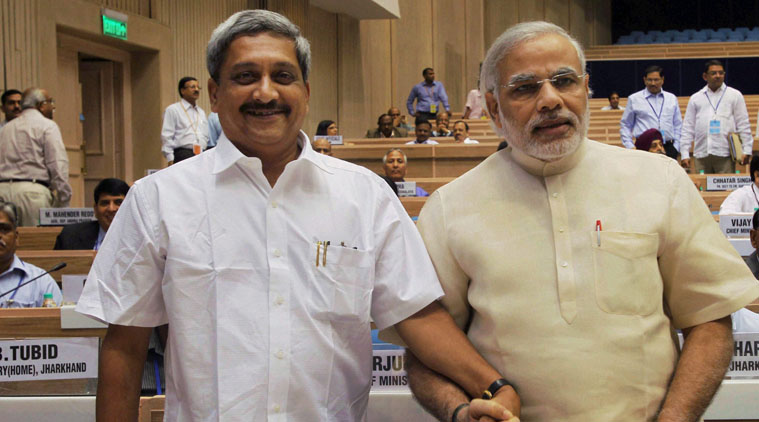One can finally see a sense of purpose and impetus to move forward in the Indian military establishment. This is can be largely attributed to change in leadership and appointment of an energetic and purposeful defense minister. In the past one year, a spate of modernization programs have been cleared or commission and existing programs have been speed-ed up. The general view on these actions is that the intent is right but a lot needs to be done to rectify the years of inaction. But noone is asking the most important question on the army's modernization program and that is, whether it is planned anticipating the future.
Let us get straight to the point, why is the Indian armed establishment preparing itself for conflict in central Europe rather than a Himalayan conflict in the north and Naval conflict in the Indian Ocean Region (IOR). And are we equipping ourselves with the right tools to fight these conflicts. The reason the question is being asked is that our armed forces are trying to build a platform similar to the one the cold war powers possessed during their stalemate on the German plains.
'
A prime example being India's continued efforts to build Main Battle Tank (MBT) Arjun. As the First and Second Gulf War, IDF-Hezbollah war and other modern conflicts have proved, Main Battle Tank is an out-dated concept. While they were the main thrust tools for Soviet plans through the Fulda gap, in today's low intensity conflict, they are just cumbersome piece of equipment with little tactical advantage. Given that majority of our border is mountainous, a Main battle Tank is useless in any conflict with China or future low intensity warfare in Kashmir like Kargil war. Therefore, wouldn't it better if India instead focused on building low turreted futuristic platforms like the Russian Armata that can be developed to various vehicles evolved to operate in different situations.
This takes us to another important point, are we spending enough on research in Mountain warfare and High attitude warfare. Simple but very important aspects including cold weather clothing and material research, mountaineering equipment are in some cases still being imported and not produced indigenously. If this is the situation of our preparedness in terms of even basic necessities, we can as well forget about ability to fight futuristic warfare. Take for-example the research by countries on development of Wing-suits for long distance insertion deep inside enemy territory. This is highly relevant for mountainous terrain in the Tibetan plateau. This is just one of many things that we are not looking into. In-fact given that more than America or Russia, mountain warfare is highly relevant to us, we should be at the forefront of developing radical and path breaking weapons. India's defense establishment should not only have long term strategic plan for mountain warfare but also dedicated laboratories for development of radical technologies rather than as in today focusing on irrelevant research such as the discovery of Sanjeevani plant.
The point of building an army for the past is not just the case of the Indian army but also its naval and air forces. Take for examples, the tremendous money being spent on building aircraft carrier groups. Once again aircraft carrier groups are becoming obsolete from their hey-day in world war II and cold war world. Just as Long range Bombers made battleship's irrelevant, access denial strategies involving cruise and ballistic missiles are making today's aircraft carriers nearly impotent. The latest issue of the Economist, calls for development of such fantastic technologies such as Rail guns and directed energy laser weapons if aircraft carriers and other surface ships are to remain relevant in modern battlefield. Given that India's potential conflict will be more likely with China than Pakistan. How would Indian aircraft carries be effective when China has devised ways to counter and neutralize American carrier group dominance. And surely, China would down the road give access to Pakistan to such carrier defeating technology like the recently tested WU-14 which would easily neutralize all our planned aircraft carriers.
The Economist in the same issue calls for America to develop its third offset technological jump innovations. It asks for America to ditch the expensive human controlled fighter aircraft in favor automated drones. In this context, the entire debate about Rafale and Grippen aircraft is non sequitur. India should rather emphasis on developing low cost stealthy automated drones that can produce rapid and large scale impact.
Hence it is time, India stopped building a World War II army. Sure the mandarins of the armed forces would rather like to have Big Tanks, Big Ships (aircraft carriers) and Faster Jets. But the defense minister should take holistic view of the future and conserve our limited resources in developing and building the forces required to fight a 2040 war rather than 1940 one. India should follow the leads of China, Russia and America and develop multi utility armor platforms and integrated soldier packs. The focus should be for rapid response, high impact warfare in limited time-scale as modern battle will evolve to that. India air modernization should focus on Drone and anti-drone warfare in the same vein while the naval department should increase its focus on submerged warfare including larger submarine fleet and even autonomous unmanned submarine drones. And not the least, India should remember that tomorrow's battlefield will be five dimensional one rather than a three dimensional like in the past. Cyber and space warfare will be a key component of any attack. Development of anti-satellite and anti ballistic technology will be key in the latter's case while harnessing Indian IT and technological bench strength to develop cyber capabilities to not only defend our assets but also as a deterrent for future mischief.
Therefore the minister should think for the future, think out of box taking an outside view rather than being confined to vision of bureaucratic mandarins of the north block.







well said dude :)
ReplyDelete